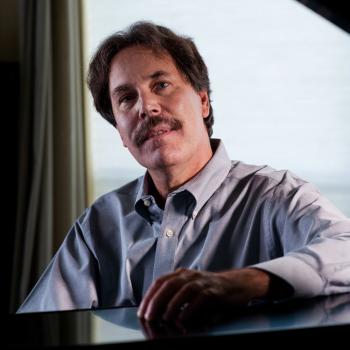The distinguished sociologist of religion Peter Berger once promoted “the secularization thesis,” arguing that as societies become more modern, they become less religious. But he has since said that thesis has been falsified, that the world is getting more religious than ever (and that modernity actually has contributed to the growth of religion). The more interesting question, he says now, is why Europe has resisted that trend.
I am wondering now, though, after my speaking tour of Scandinavia, if Europe is as secular as it appears.
Nearly 80% of the population of Denmark belongs to the state church. This requires paying a church tax of from .4% to 1.5% of one’s income, on top of an already crushing tax burden. These members have been baptized and confirmed and they will be married and buried in the church, but only 3% of them go to church on any given Sunday.
Here are further statistics about the religious climate in Denmark: According to a 2010 poll, 24% are atheists; 47% believe more vaguely in “some sort of spirit or life force”; and 28% believe in God. Another poll found that 25% of Danes believe Jesus is the son of God and 18% believe He is the savior of the world.
So, yes, Denmark is a very secular country, with lots of non-believers (about a fourth) and liberal believers (about a half), but another fourth appears to confess Christ. Perhaps a fifth are Gospel-believing Christians. That’s actually not bad for a supposedly secular country.
But let’s put the statistics together. If 80% of the country belong to the Church of Denmark, that must include lots of people who do not particularly believe in Christ, or even God. And if only 3% of the population attends church regularly, that means that lots of Christians are not attending church either.What do we make of this? Peter Berger offers one answer here, but it assumes an animosity against the church (due to its association with the state) that I’m not sure is there, at least in Denmark. This is not mere secularism, since secularists voluntarily belong to the church along with Christians, but neither of them go to church very much.
I suspect that one factor is the liberalism of the state church. The strategy of conforming to the culture to make the church more appealing almost never works, at least in the long run. The Church of Denmark officially affirms most of what the secularists already believe. So what does it offer the secularist? Why get up on Sunday to attend a service?
Meanwhile, believing Christians will be alienated from the secularist teachings that they would hear from the pulpit. Better to go to an Inner Mission prayer house than to go to the local parish to which they have been assigned, though the Inner Mission will tell them they need to go to church to receive the Sacrament. (The Wikipedia article on Denmark’s Inner Mission cites a decline in the number of prayer houses from 1000 at one time to today’s 400. But there are only 120 cities and towns in Denmark, so Inner Mission still has a very strong presence.)
But here is another possible explanation: the attitude towards church attendance is just different from what it is in American Christianity. We visited the Moravian settlement in Christiansfeld. The church is still functioning, and an accompanying museum explained Moravian beliefs, including a pitch for joining the church. These included a statement that there are no rules for how often a person has to attend church. You attend whenever you feel a need to.
This, coming from a quite conservative and evangelical church, I suspect reflects the attitude throughout Scandinavia. You don’t have to attend services every week and you only go to church when you need to. The 3%-ers do attend sometimes. On Christmas, Easter, and other Christian holidays–of which the Danes seem to celebrate more than most Protestants–they go to church. Also at baptisms, confirmations, marriages, and funerals, those relating to themselves, their families, and their friends. And, presumably, when they “feel a need,” presumably when they are troubled or struggling or want contact with God.
This is not up to the standard of Hebrews 10:25 and it remains a problem. But I suspect that this view of church attendance is commonplace throughout Europe and that it can also be found in the United States.
It is not exactly the same, however, as indifference to church. Even though church attendance is one of those behaviors that can be easily measured (something social scientists love), it may not be the best way to determine the degree of a society’s secularity.












